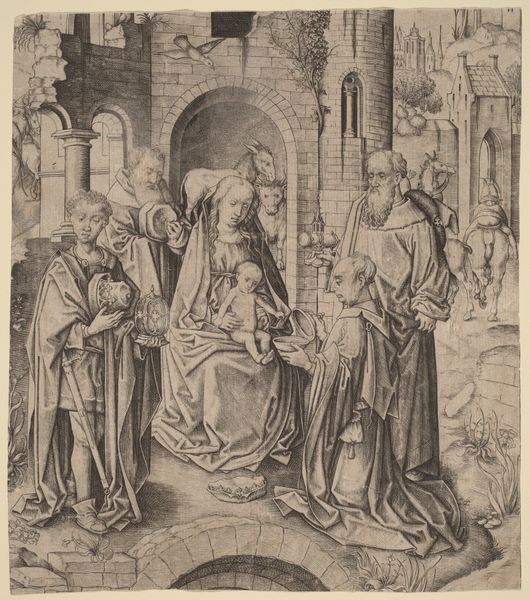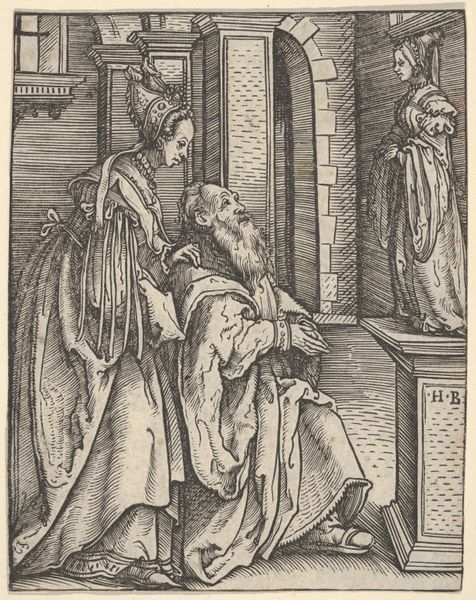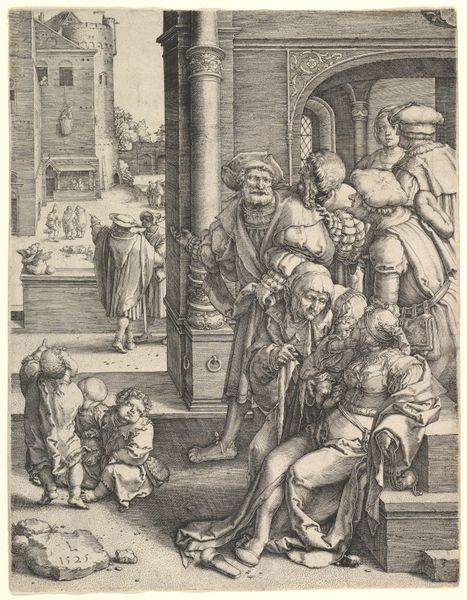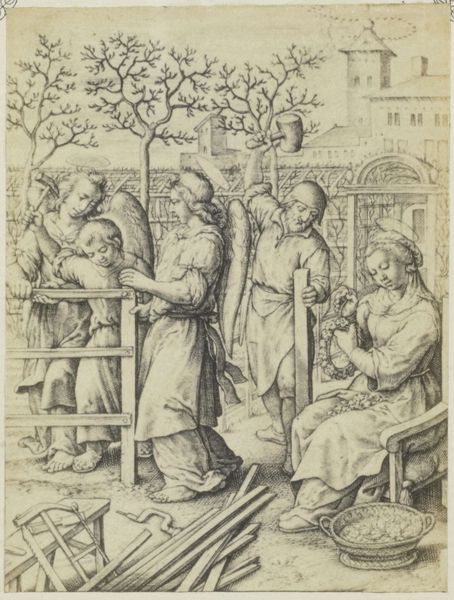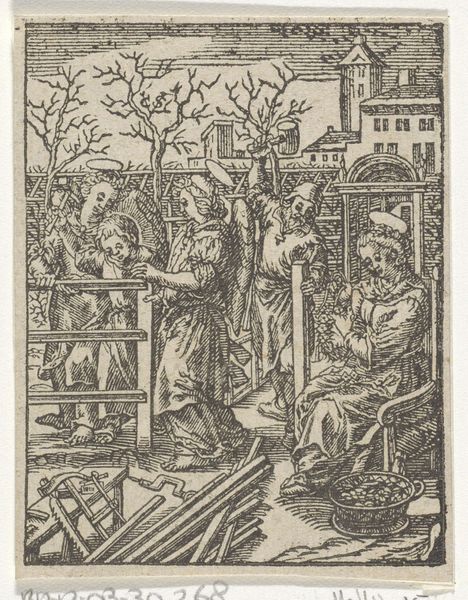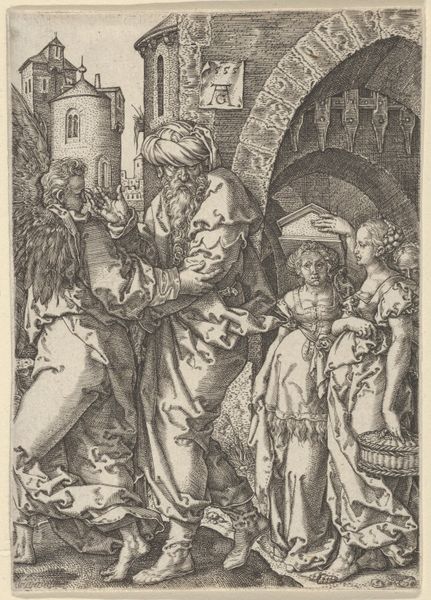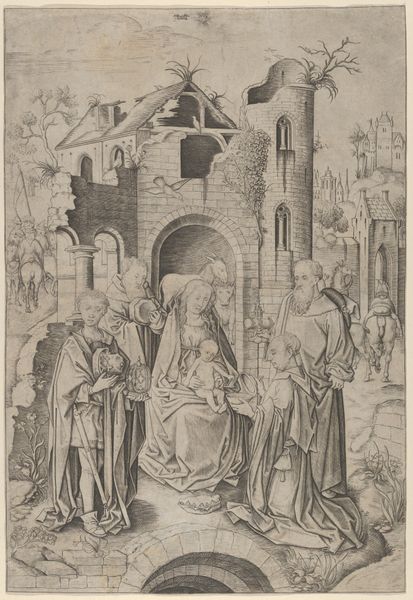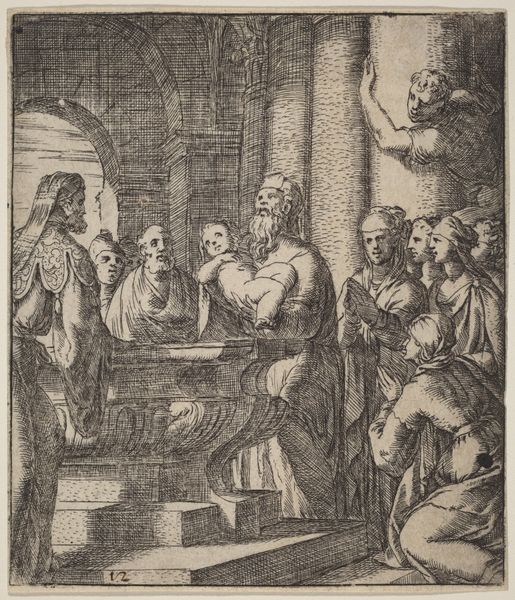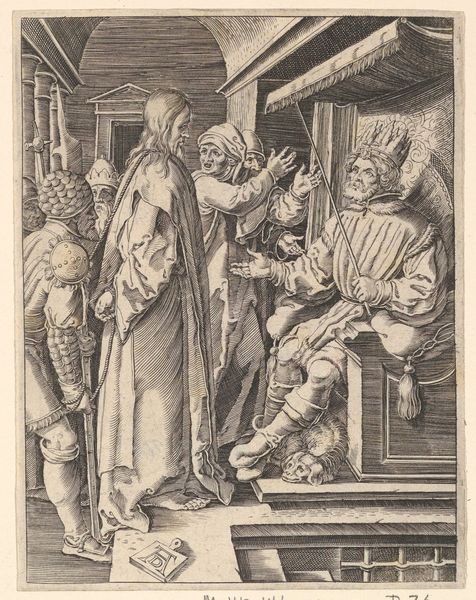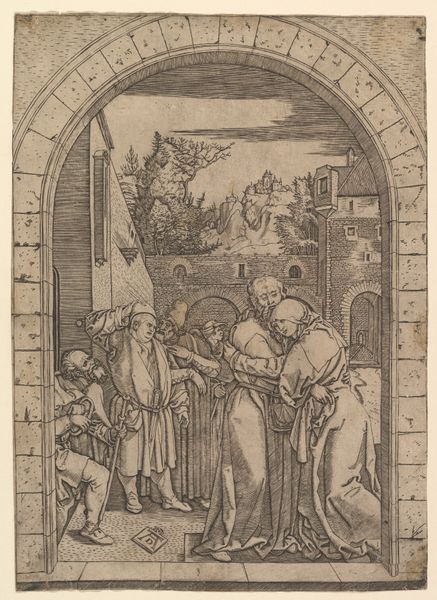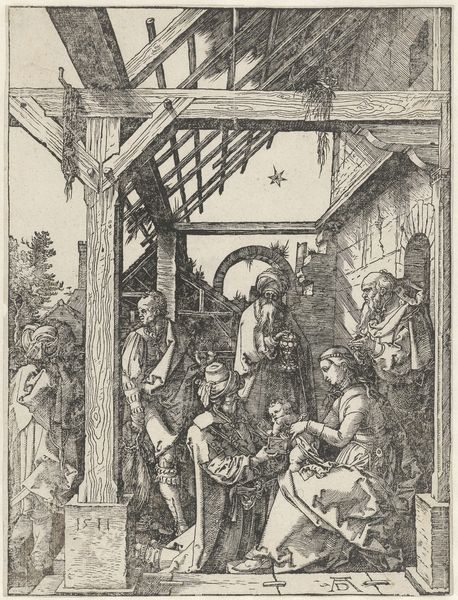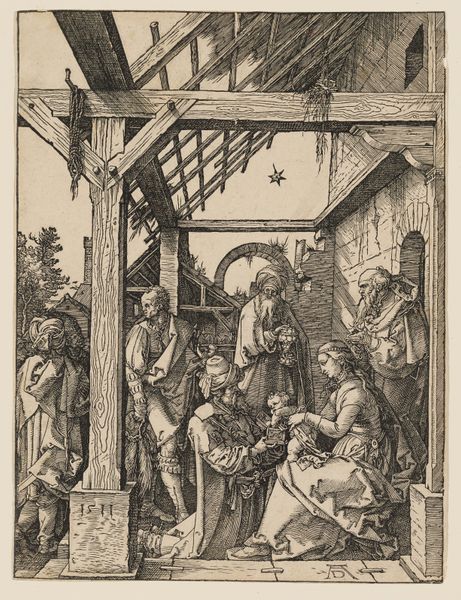
drawing, print, engraving
#
drawing
#
narrative-art
# print
#
landscape
#
figuration
#
northern-renaissance
#
engraving
Dimensions: sheet: 6 3/4 x 4 13/16 in. (17.1 x 12.2 cm)
Copyright: Public Domain
Curator: Dirck Vellert's engraving, "St. Bernard Adoring the Christ Child" from 1524, captures a meeting of profound humility and sacred tenderness. What springs to mind for you upon seeing it? Editor: The intensity of detail in the landscape and architecture almost overwhelms the central figures! There's such weight in the materiality of it all, from the textures of the fabric to the solid construction of the buildings. It's very Northern, this attention to detail. Curator: Precisely. Vellert, rooted in the Northern Renaissance, weaves symbolism into every line. The almost claustrophobic level of detail pulls my focus. Like he is so caught up in a vision. Don't you think that heightened reality adds a kind of feverish, internal quality to the experience? Editor: I see the labor, too. Think of the hours spent meticulously crafting each line, each shadow. Engravings like this served a function; they were produced for wider circulation, to transmit specific religious and moral ideas, so the intense detail, rather than a pure affect, signals a certain intent, the transmission of sacred information. Curator: Ah, but intent is a tricky thing, isn't it? Consider St. Bernard’s bowed head. To me, it is like a plant turning towards light; his gaze, internal and focused, seems a more genuine testament. I guess, like most art, these layers co-exist to enhance meaning. Editor: Definitely, the image works on multiple levels. It is art and propaganda. But by calling it propaganda, I don't wish to reduce its merit. In the Early Modern Era art fulfilled various functions: aesthetic, informative, ritualistic. Each is linked intrinsically. Curator: Well put! Reflecting on Vellert's print, it’s easy to become engrossed by what each component, even each line, meant for people living almost half a millennium ago, and how it affects us differently today. Editor: Exactly. And how the making of the art in and of itself reinforced hierarchies, roles, and social mores in a constantly changing world.
Comments
No comments
Be the first to comment and join the conversation on the ultimate creative platform.

